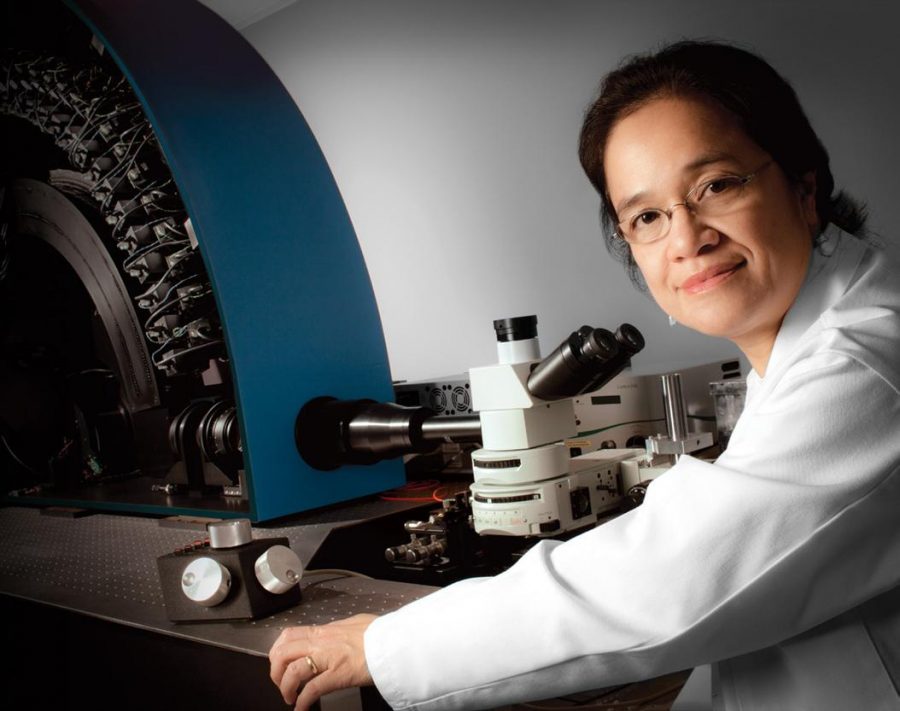Blowing bubbles may seem like child’s play, but Pitt researchers have added another element to the game by filling those bubbles with life-saving medicine.
Researchers from UPMC’s Center for Ultrasound Molecular Imaging and Therapeutics are experimenting with sonoporation, a technique that uses microscopic bubbles filled with medicine to treat cancer. In a study published last week, the researchers outlined the experimental procedure.
The team’s plan — when the study reaches clinical trials — is to inject microbubbles into a patient’s bloodstream, while simultaneously directing an ultrasound at a cancerous tumor. The microbubbles will remain still until they enter the ultrasound field, when they’ll start vibrating and poking holes in the nearby cells.
“We’re peering more closely into exactly how … this technology [works],” Flordeliza Villanueva, senior author of the study, said. “Now that we’re excited about its potential for affecting patient care, we really want to understand it in greater detail.”
Since at least 2004, researchers have been investigating the use of ultrasound technology for not only its imaging capability — such as showing fetal images — but for its therapeutic capability as well.
Xucai Chen, research associate professor of medicine at Pitt, said this research group as well as others have successfully used sonoporation to break up clots in stroke patients. They have not, however, reached the stage of clinical trials for drug or gene delivery using sonoporation, according to Chen.
Researchers can use sonoporation to deliver drugs to treat cancer or to improve functioning of the cardiovascular system. To do this, the researchers fill the microbubbles with drugs or genes and then inject them into the patient through an IV. The microbubbles then travel freely throughout the bloodstream, as they are too large to exit the bloodstream without rupturing.
Once Villanueva and her team reach clinical trials — in the next three to four years — the treatment will be a couple of routine procedures.
To capture the bubble’s activity, Villanueva and Chen developed a high-speed camera that could capture up to 25 million frames per second. Chen said the word “ultrasound” indicates movement at millions of cycles per second so the high-speed camera, dubbed “UPMC Cam,” is able to capture what most cameras can not.
Though the UPMC Cam is the only one of its kind in North America, both it and a similar camera in the Netherlands are based on an existing system made by Cordin Company. Chen said the team at Pitt adapted the camera for microscopic observations by increasing its spatial resolution.
“If you want to see what’s going on with these bubbles, you need a camera that’s fast enough,” Chen said.
The researchers used UPMC Cam to follow the microbubbles as they vibrated in the ultrasound field and caused cavities to form on the target cells, which are typically diseased cells.
Using a slower-speed camera with fluorescent imaging, the team watched the microbubbles create small cavities on the surface of the nearby cells.
Brandon Helfield, postdoctoral fellow at the Center for Ultrasound Molecular Imaging and Therapeutics and lead author of the study, said the combination of the two camera types allowed the team to monitor every step of the sonoporation process.
“The bubble time scale is microseconds, but the cellular response is seconds to minutes, which is six to seven orders of magnitude slower,” Helfield said. “So this system allows us to bridge the physically relevant timescales between physics and biology.”
This precision is one of the advantages of sonoporation.
Currently, one common technique of drug delivery is through a carrier virus, which uses the naturally invasive characteristics of the virus to enter cells and deliver the desired treatment. Villanueva said viral-delivery methods are “promiscuous,” however, traveling wherever they like through the body, unlike the site-specific nature of sonoporation.
Helfield said viral methods can also cause heightened immune responses and inflammation, undesirable reactions in an already-ill patient.
Though Villanueva and her team have not isolated all of the possible side effects of sonoporation, they believe the side effects will be less severe than current drug delivery methods.
By learning more about the process of sonoporation in living systems, Villanueva said the research team hopes to characterize the most important aspects of successful treatment delivery — and one day, to reach a stage where sonoporation can be used to deliver medicine.
“We didn’t invent sonoporation,” Helfield said. “[But] with a deeper understanding of this strategy, we can use it as a tool to site-specifically deliver a therapeutic to a location of interest.”



